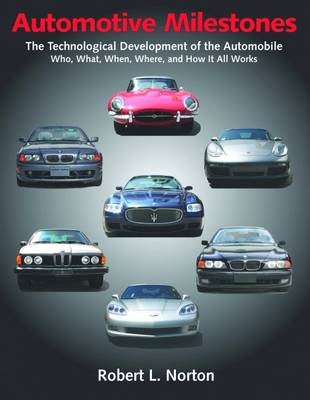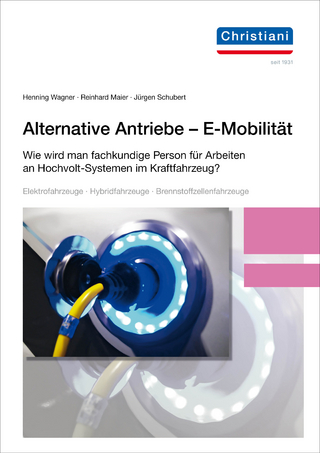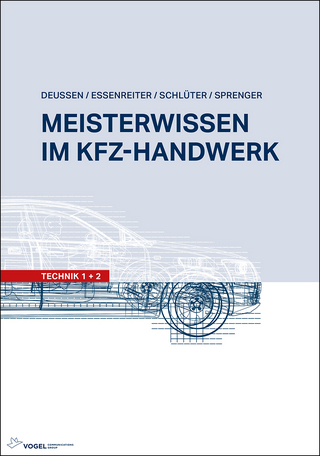
Automotive Milestones
Industrial Press Inc.,U.S. (Verlag)
978-0-8311-3520-1 (ISBN)
This is a general interest trade book that describes the development of automotive technology and engineering from the start of the industry before 1900 to the present day. It explains how various systems and elements in the automobile work in layman's terms, without resorting to mathematics, and highlights the keymilestones in the historical development of automotive technology. All photos and illustrations are in full color. The intended audience is older teens to adults of any age who are interested in the subject and may be involved in it as a hobby. Sometimes referred to as "gearheads" or "motorheads", they form a huge market. Over the years many of the author's engineering students were in this category, and he often would meet with on-campus car clubs to explain the way things automotive worked, being careful to damp down or eliminate any complicated mathematics, as he does in this book. An Internet search found only titles that are either "hard-engineering oriented" -- such as publications from the Society of Automotive Engineers (SAE) -- or mere compendiums of dates. Books in the latter category note the milestones but without hardly any explanation at all of how these developments actually work in a technical sense - which is the aim of this book. "Automotive Milestones, by Robert L. Norton, is about all the mechanisms that are needed in an automobile and how they work. The book consists of eight main chapters, each one covering a major mechanical system of the automobile plus a summary chapter and appendices. There are numerous photographs and illustrations used throughout the book to support the concepts discussed.
The author has thoroughly researched the subject and leaves the reader with a new appreciation of what has been tried over the nearly 250 years of automobile history. The book is logically organized and clearly explained in a way that only a person with in-depth knowledge could do.
His latest book is Automotive Milestones which provides the cornerstones of a thorough understanding of automobile technology. If you are just looking for a general understanding of the automobile, looking for inspiration in support of a new idea, or just want a concise history of automotive milestones, this book is a must read."—Parker Ackley, Antique Automobile Enthusiast
Did you ever wonder?...
Who formed the first automobile company in America?
When and who made the first fully automatic transmission? (Hint: it was not GM in 1939)
What is the difference between sprung and unsprung weight in a car, and why does it matter?
When did the frame of a car get replaced by the unibody?
How does a differential work?
It took more than 100 years to develop the modern automobile. This book presents a very readable and informative description of this evolution.
The author, Robert Norton, is an engineer with many years of experience in the design of machinery. Automotive Milestomes is a clear presentation of the internal workings of the automobile over the years.
No matter whether you are a seasoned car buff or just curious to learn more about the history of cars, you will enjoy reading this book.—William J. Crochetiere, Professor Emeritus, Tufts University
Robert L. Norton, P.E. has 50 years experience in the practice and teaching of mechanical engineering. He holds undergraduate degrees in mechanical engineering and industrial technology from Northeastern University, and a M.S. in engineering design from Tufts University. Having designed cams for camera mechanisms at Polaroid Corporation, he subsequently spent many years doing design work at Gillette and many other companies. He taught kinematics, dynamics, stress analysis, and machine design to mechanical engineering students for more than 40 years at Northeastern, Tufts, and Worcester Polytechnic Institute, where he is theMilton Prince Higgins II Distinguished Professor Emeritus of Mechanical Engineering. Additionally, he has published many technical papers and holds 13 U.S. patents. He is a member of the Society of Automotive Engineers (SAE) and a Fellow of the American Society of Mechanical Engineers.Motive Power: External Combustion Engines. Internal Combustion Engines. Electric Vehicles. Chassis Layouts and Drivelines: The First Production Automobiles. Other Early European Makes. Engine Configurations: Cylinder Arrangements. Floating Power. Summary. Valve Trains, Inductions, and Supercharging: Valve Actuation. Valve Cam Functions. Valve Arrangements. Variable Valve Timing (VVT). Cylinder Deactivation. Fuel Control. Summary. Transmissions and Differentials: Gearboxes. Friction Drive. Planetary Transmissions. Overdrive Transmissions. Semi-Automatic Gearboxes. Preselector Gearboxes. Dry-Clutched, Semi-Automatic. Automatic Transmission. Differentials. Summary. Suspension and Steering: Sprung versus Unsprung Weight. Rear Suspension. Front Suspension. Dampers. Steering. Brakes: Mechanical. Hydraulic. Air. Power. Parking. Body: Body on Frame. Streamlined. Unibody. Monocoque. NVH. Summary.
Robert L. Norton, P.E. has 50 years experience in the practice and teaching of mechanical engineering. He holds undergraduate degrees in mechanical engineering and industrial technology from Northeastern University, and a M.S. in engineering design from Tufts University. Having designed cams for camera mechanisms at Polaroid Corporation, he subsequently spent many years doing design work at Gillette and many other companies. He taught kinematics, dynamics, stress analysis, and machine design to mechanical engineering students for more than 40 years at Northeastern, Tufts, and Worcester Polytechnic Institute, where he is theMilton Prince Higgins II Distinguished Professor Emeritus of Mechanical Engineering. Additionally, he has published many technical papers and holds 13 U.S. patents. He is a member of the Society of Automotive Engineers (SAE) and a Fellow of the American Society of Mechanical Engineers.
Motive Power: External Combustion Engines. Internal Combustion Engines. Electric Vehicles. Chassis Layouts and Drivelines: The First Production Automobiles. Other Early European Makes. Engine Configurations: Cylinder Arrangements. Floating Power. Summary. Valve Trains, Inductions, and Supercharging: Valve Actuation. Valve Cam Functions. Valve Arrangements. Variable Valve Timing (VVT). Cylinder Deactivation. Fuel Control. Summary. Transmissions and Differentials: Gearboxes. Friction Drive. Planetary Transmissions. Overdrive Transmissions. Semi-Automatic Gearboxes. Preselector Gearboxes. Dry-Clutched, Semi-Automatic. Automatic Transmission. Differentials. Summary. Suspension and Steering: Sprung versus Unsprung Weight. Rear Suspension. Front Suspension. Dampers. Steering. Brakes: Mechanical. Hydraulic. Air. Power. Parking. Body: Body on Frame. Streamlined. Unibody. Monocoque. NVH. Summary.
| Erscheint lt. Verlag | 26.11.2015 |
|---|---|
| Verlagsort | New York |
| Sprache | englisch |
| Maße | 216 x 279 mm |
| Themenwelt | Sachbuch/Ratgeber ► Natur / Technik ► Fahrzeuge / Flugzeuge / Schiffe |
| Technik ► Fahrzeugbau / Schiffbau | |
| ISBN-10 | 0-8311-3520-4 / 0831135204 |
| ISBN-13 | 978-0-8311-3520-1 / 9780831135201 |
| Zustand | Neuware |
| Haben Sie eine Frage zum Produkt? |
aus dem Bereich


